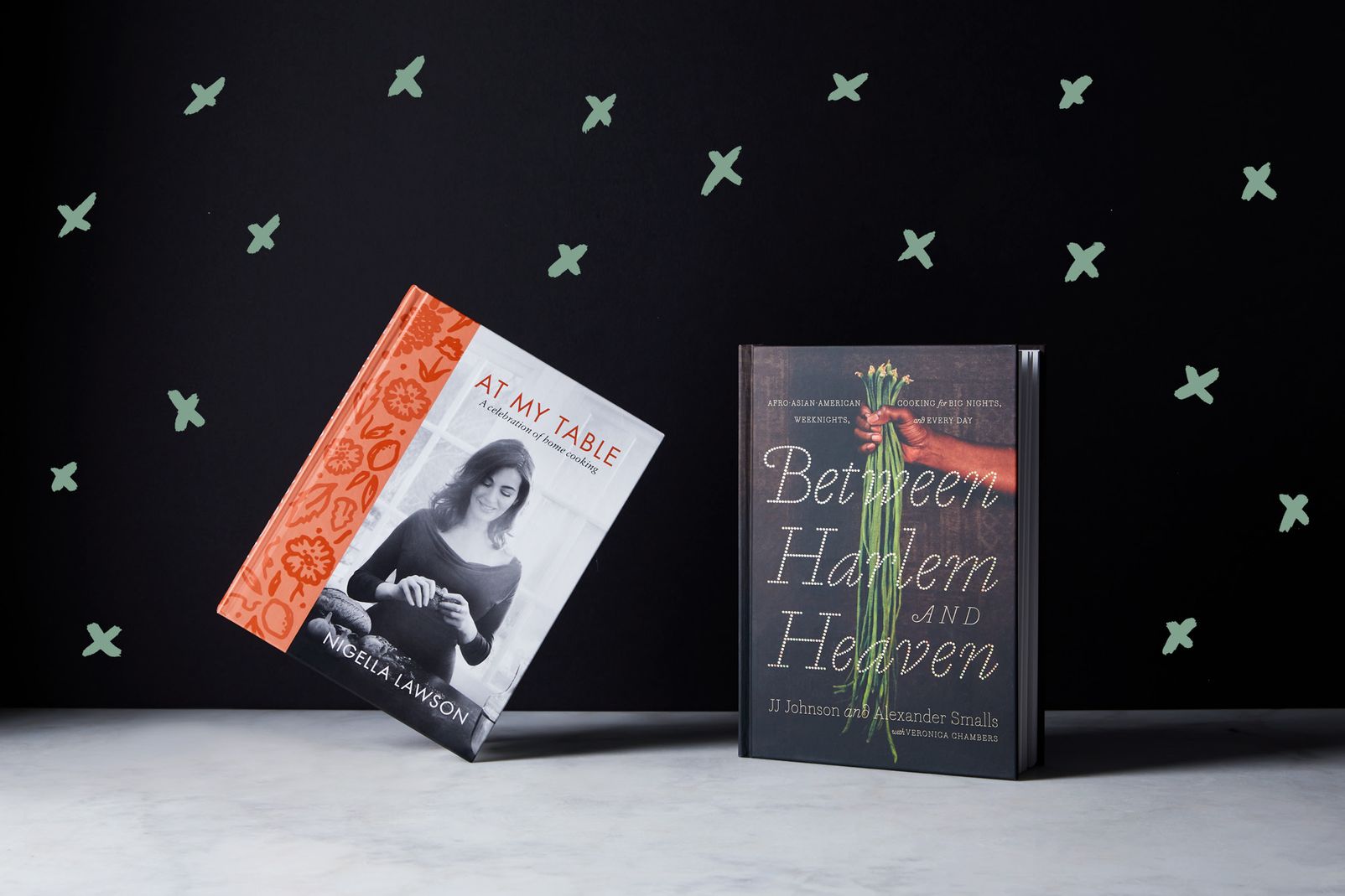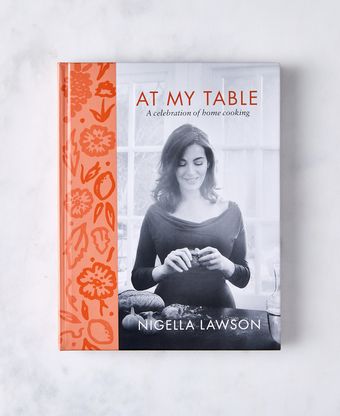I am a chef of my own making. I learned to cook not professionally, but in the kitchens of my family. My Pakistani grandmother taught me how to listen to and respect spices, holding them in her hands with reverence before bringing them together. My Finnish nanny, who became a bonus grandmother to us, taught me the virtue of precision when it came to baking. And my mom taught me how to find the familiar and the love in all things the universe presents—like the spices and flavors that connect us to faraway lands, yet smell and taste like home. For example, my Pakistani grandmother and my Finnish Gram both smelled like cardamom. One put it in her tea; the other in her bread. Through this simple shared smell, they were eternally connected. And from these extraordinary women—my grandmother, Gram, and my mom, who all took me around the world and back again—I learned to speak the universal language of food. My own food language was thusly born.
Above all, I cook and bake from a love of storytelling. For me, every ingredient in a recipe is an opportunity to convey a moment of memory and tell a story. I make it a point to share my family’s memories in each recipe I write. And if a recipe comes from someone else’s cookbook, I hope they share their memories with me, too, with the invitation to make them my memories in some way. There is nothing more intimate than preparing food for another person. And, to me, capturing one’s special memories in a recipe is a natural extension of this important human connection.
When I first received the two books I was to judge for the Piglet Tournament of Cookbooks, I read both introductions before looking at any recipes. I asked myself: What do the authors intend for me to take away? Both books come from a place of wanting to share the authors’ family foods, with the ambitious hope that we, as users, will cook these family foods at our everyday table. Going in with that premise, I cooked from them both with some questions in the back of my mind: Would I make these dishes on a random Tuesday? And if I did, would my family love them? More importantly: Would their food languages come across consistently and passionately, enough to make their story part of my food memories?

I first read the preface to JJ Johnson and Alexander Smalls’ Between Harlem and Heaven, and was immediately transported to their childhood kitchens. Both Smalls and Johnson reminisce about the foods they grew up with. In fact, Smalls speaks of his lifelong pursuit of sharing the African diaspora via these memories and family recipes. These authors continuously commit themselves to telling their diaspora story from a primarily American point of view, representing America's veritable melting pot of experiences, histories and cultures, and getting us to a place of pride in our complex history. One of Johnson’s mantras, which I know rings true for so many of us, is “Food was home and home was food.” And so I began my journey into Between Harlem and Heaven, in hopes of finding that “food was home” moment of my own amidst their recipes.
I was first struck by the depth of history behind each recipe. It is abundantly clear that Johnson and Smalls researched the world to bring us this book. I found myself consumed in their lavish, storied descriptions, wanting to read about the naissance and context of the foods above even preparing them. Accordingly, I set out to make recipes from the different story lines of the book, and found a definitive point of view and flavor profile represented throughout. It’s one filled with bird’s-eye chiles, coconut milk, and cumin. For this reason, I now find myself referring back to their stories when I encounter foods of the African diaspora (see how quickly theirs became one of my adopted food memories?).
To dip my toe in the water, I started with something that was familiar to me as a baking professional, and found a recipe for Cornbread. I was first struck by the technique and ingredients of this recipe, which were much different than the cornbreads I’m used to making: No heating the pan in the oven while you make the batter, and no adding actual corn kernels to the mixture, either. Instead, a hot oven, some Aleppo pepper, and cheddar cheese. I held fast to the recipe as written, and was happy to bite into the crunch of crust that resulted from the high heat bake. Okay, I thought, this was a good start. It wasn’t my favorite texture, being on the crumblier end, but the recipe was clear and concise, and the results as promised. The recipe was on the straightforward and conventional side, but then again, I wanted to try dishes of varying degrees of complexity, particularly in light of having to compare it to Nigella Lawson’s book and her approach. With this simple cornbread, I had just begun my ascent from basecamp.
I next tackled the Daikon Radish Salad with Crispy Shallots, Walnuts, and Asian Pear Dressing. The prep and cook times were misleading—while the actual salad itself did in fact adhere to the two hours it purports, some of its components required additional preparations that extended the total preparation time to five hours. This was definitely not a Tuesday-school-night-dinner affair, but the work was worth it. The dish hit salty, sweet, and acidic notes beautifully, and the layered heat of the bird’s-eye chile and Dijon in the dressing was well-balanced by the addition of cinnamon and citrus. It reminded me of something from my childhood that I couldn’t put my finger on. A food memory.
Then I prepared the Grilled Chicken Thighs with Adobo Sauce. In the recipe's headnote, the authors mention that adobo sauces vary significantly between versions, and this one included a punch of sweetness from West African palm sugar and rice wine vinegar. I was curious to see how these ingredients would balance the chiles in the sauce, knowing the authors’ affinity for heat. The chicken definitely took on on a meaningful amount of sweetness as it marinated in the sauce before grilling. I served the dish with some Coconut Sticky Rice, which, in retrospect, might have been a bit too sweet for the palm sugar-saturated chicken. Were I to make this again, I would lean toward serving the chicken with a different rice dish in the book, or perhaps naan instead.
With a hankering for a savory rice dish, I then made Jollof Rice and Beans. Having grown up with lentils and rice (daal chawaal) as a staple dish in my childhood home, I felt a kinship to this one-pot wonder. The recipe is fairly straightforward, but like the radish salad, has several multi-step, subrecipes-as-mise-en-place processes throughout. Given the acidic, tomato-heavy bend of the finished dish, I found myself looking for some heat and sweetness to balance the meal out. I wanted to prepare a complementary dessert, but couldn't locate any. Perhaps it’s because there is a sweet element to myriad dishes in the book’s repertoire. So I went back in search of the leftover cornbread I made earlier—and put some honey on it.
Finally, wanting to come full circle and completely understand the authors’ culinary point of view, I made the Mother Africa Sauce. This sauce is compared to one of the five mother sauces sauces—les grandes sauces—foundational to French cuisine. With the cumin, onion, tomato and garlic, I was expecting the Mother Africa sauce to be very acidic and one-note. But as soon as I added the peanut butter and vegetable stock called for by the recipe, I understood the complexity of what was going on here. It was then I decided that this sauce was the definition of this book’s food language. I have deep respect for this sauce, and though the authors invite riffing and personalizing on all of their recipes, I wouldn’t change this recipe even a little. Wanting to put the Mother Africa Sauce on just about everything, I searched around the house to find something to accompany it, and landed on Ruffles potato chips. I decided to use the Mother Africa Sauce as a dip, and I wasn’t mad about that decision at all.

Nigella Lawson is an early voice in my food memory. So I looked forward to her book, At My Table, whose recipes are akin to sitting at her table and eating with her family. She eschews formal chapters in the book, and instead follows a more lifelike approach of meandering through the day’s meals. I found that despite this lack of ostensible structure, there were clean delineations as she purposefully led us down a path. Throughout, Lawson speaks to us about the whys and the hows of her cooking, and not so much about her personal journey, as one might expect from an intimate book like this. Still, she writes as she would speak aloud. And as the book is a working manual on Lawson’s tactical approach in the kitchen, this personable voice especially resonates with and comforts the home cook.
I consciously decided to work my way backwards in the book, in part because Lawson references in the introduction Kierkegaard’s premise that “life can only be understood backwards.” But I also did this because the back of the book is where the dessert recipes live. Upon seeing a dessert called “Queen of Puddings,” I knew that’s exactly where I should start. I began by measuring out all the ingredients for the pudding, which consists of a base of bread crumbs soaked in creamy custard, a layer of preserves, and a crackly meringue top. Based on the amount of liquid in the custard, I was already nervous about how little brioche was called for to make bread crumbs. And once the pudding came out of the oven and the preserves were added, the dessert looked more like a soup. We ate it warm and loose, and I had hopes that it would thicken as it cooled. Unfortunately, it did not very much. The flavor of the pudding, however, bright with lemon and sweet with meringue, was well-balanced and just complex enough.
I moved on to the Vanilla Layer Cake with Ermine Icing, a riff on buttercream that I had never made, or even heard of, before. The recipe, adapted from one on Serious Eats, involves creating a roux with flour and a significant amount of sugar. The roux is cooled and then gets added bit by bit to well-whipped butter, much like butter would get added to cooked sugar and eggs in a more traditional Swiss or Italian buttercream recipe. Quite unexpectedly, the buttercream came together easily and was as light as any meringue buttercream we make at the bakery. The main difference was the stability it maintained. I began to dream about serving this cake at an outdoor summer birthday, first carrying on a train to transport it, and knew that it could survive both. The vanilla cake itself was unremarkable, and as recommended, best eaten the day it is made. But it served quite nobly as the perfect vessel for the ermine buttercream.
Before turning my attention to the savory ideas of the book, I made one more cake: Lemon Tendercake. Touted as a vegan dessert, I was unsure how the absence of eggs would affect the texture. Fearing it would literally fall flat, I understood why there was a blueberry compote-and yogurt-topping that could hide any caving in. But once of out of the oven, the cake surprised me with its impossibly light crumb and great structure. With a subtle lemony taste and beautiful, tender texture, the cake made good on its name.
Lawson leads us by the hand through what feels like the history of her dinner table. She presents snacking foods, dinner party dishes, large sharing platters, and more. Her Spiced Lamb with Potatoes and Apricots is a perfect example of her “preferred food”: comforting, hearty, good for company, and sublimely aromatic. The spices—coriander, cumin, ginger, cardamom—are reminiscent of both Between Harlem and Heaven and also my childhood. The spices and prolonged cooking tenderized the lamb, but I think I put the potatoes in too soon and ended up with a bit more of a mash than pieces in the end.
Wanting to get to the root of Lawson’s love of lamb, I made the Slow-Roast Five-Spice Lamb, but without the recommended Chinese Pancakes the recipe specifies. By slow-roasting the lamb with the five spice, she lets the seasoning take center stage, intensely infusing the meat with its fragrant aroma. This lamb became a great canvas for a few different meals, and the recipe taught me an interesting and widely applicable technique.
Lawson’s storytelling abounds—as does her love for “traybakes.” As everything is placed on a baking sheet at once to cook, this preparation reportedly eliminates a lot of work. What it adds, however, is the need to season more intentionally and repeatedly throughout the baking time. I made both the Indian Spiced Chicken and Potato and the Chicken and Pea Traybakes, and found that what they lacked in oomph they handily made up for in ease.
The book presents itself almost like a Garanimals wardrobe, with many recipes one can mix and match. I made the pungent and bright Coriander and Jalapeño Salsa to top the Lime and Coriander Chicken, and served it with Lawson’s Chopped Salad, which is garnished with fresh herbs and crunchy pomegranate seeds. Combining several recipes into a meal layered the flavors and experiences even more than creating one dish alone. Was it more work? Yes, in some ways, but everything was also completely manageable. Lawson’s food is not revolutionary in its ingredients—these are all things the average home cook will be familiar with—but rather in its simplicity. In a world with such complexity at every turn, sometimes you need that.

Between Harlem and Heaven and At My Table are both intensely thoughtful books. They are intentionally composed, full of vibrant photographs and detailed stories. Both books also seek to bring the reader further into their worlds: One, into the history of a continent and its people, and the other, into a singularly personal tale of one woman’s table.
Both books contend that home cooks—any of us—have what it takes to be immensely creative. All we need is a little boost, in the form of recipes, flavor combinations, a bit of history, and the right ingredients. Both books suggest we can and should improvise, using their recipes as guidelines rather than hard and fast rules. While I very much appreciate the sentiment, and abide by that in my own kitchen, given the complexity and nuanced flavor profile of many of Between Harlem and Heaven’s dishes, I felt intimidated to deviate too far for fear of disrupting the balance.
I am a believer in seeking education and guidance from those with immense knowledge and experience. Accordingly, I want a cookbook to arm me with the tools I will reach for again and again. In my home, I have two categories of cookbooks: aspirational and functional, split about 95/5. But I find myself reaching for the latter 5 percent of my collection 95 percent of the time.
And with these two books, I got a bit of both. Johnson and Alexander’s book was most definitely aspirational; Nigella’s, clearly functional. Between Heaven and Harlem’s narrative was a deep education into the naissance of the authors’ foods. I would teach history from this book, and I think that’s what Johnson and Smalls would want me to do. At My Table gave me foundational building blocks on ways to prepare the everyday—though the recipes specify proteins and vegetables, the techniques can be used in many versatile ways. Almost like recipe cards, I found myself cataloging certain ideas for their reuse potential.
These books were both extremely strong in their own ways. So in the end, for me, the decision came down to the book whose recipes I thought would help me create memories and traditions, in my own food language. It would be an invitation versus a straight education. And the book that invited me into its world in the most intimate way was At My Table.



14 Comments